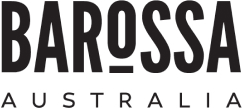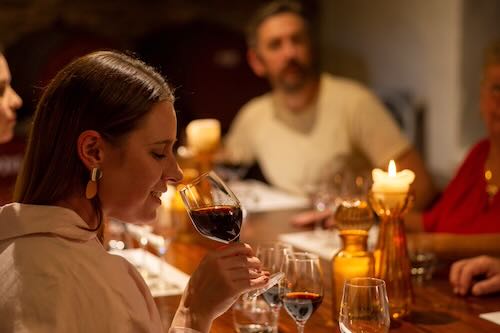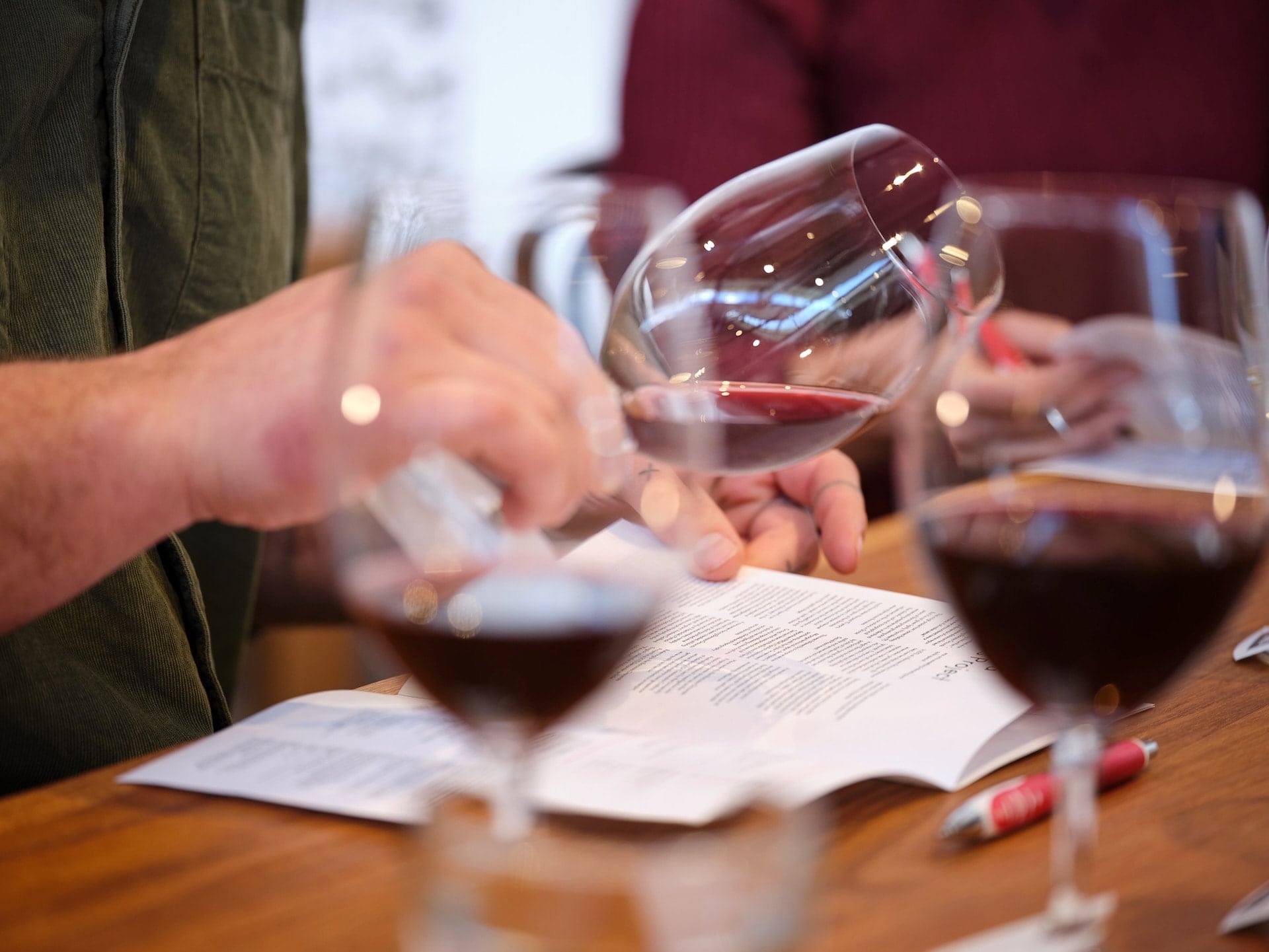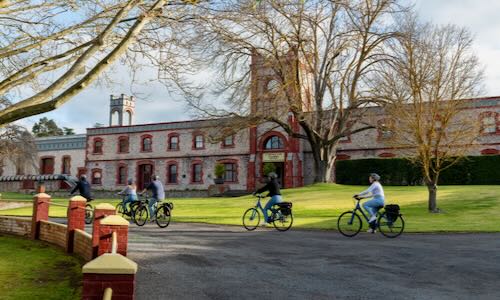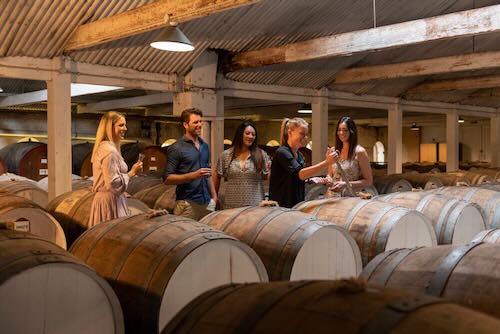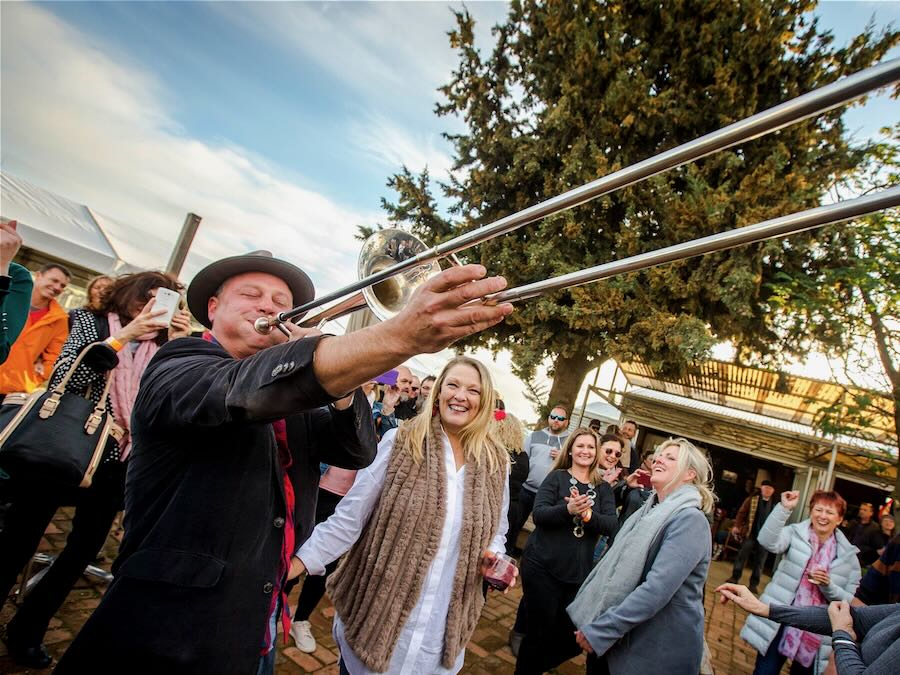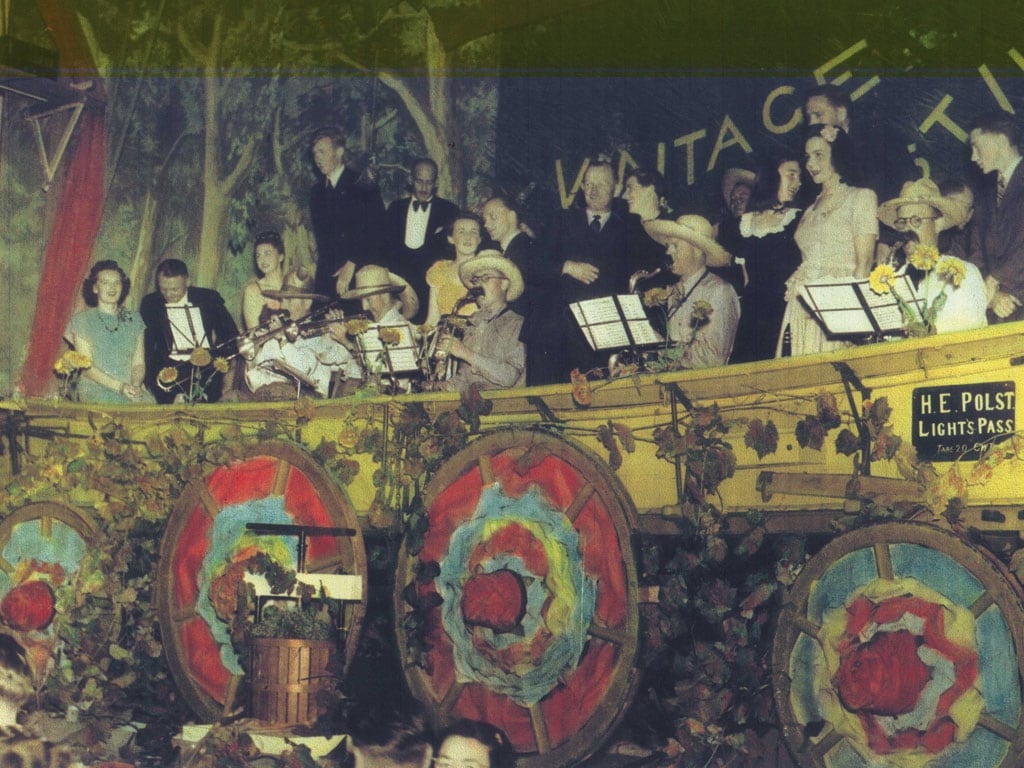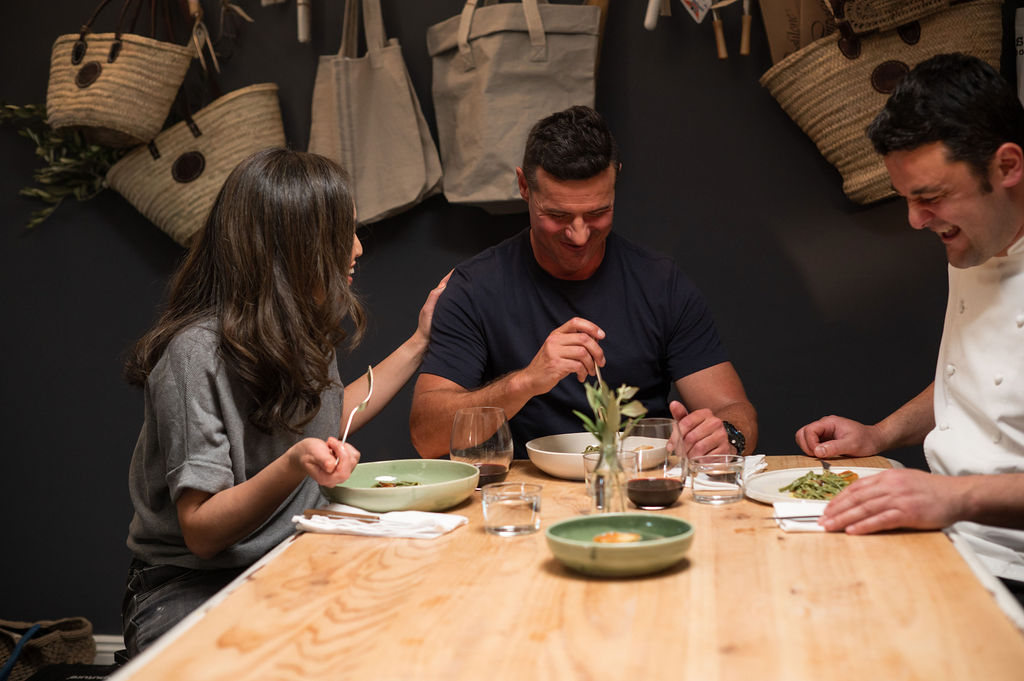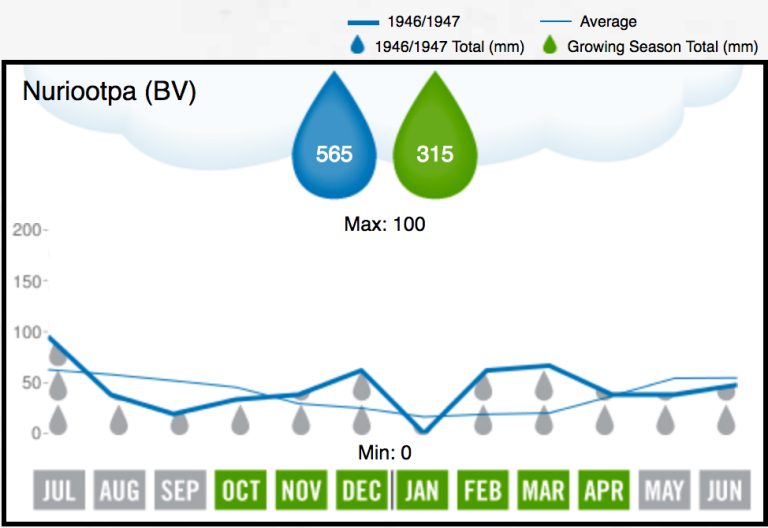Summary
Well above average growing season rainfall but with a dry January. A very wet March provided challenging vintage conditions.
Highlights
This was an all time record production year for SA with 2.75 million gallons produced, which surpassed the previous record in 1946 and followed the drought year of 1945 – the lightest vintage since 1923.
The first Barossa Valley Vintage Festival was held to mark the end of vintage – and the end of World War II. Bill Seppelt, who had witnessed similar thanksgiving celebrations in Europe, initiated the idea.
Fortified wines – ports, sherries and brandies – were the main wine style produced in the Barossa. However, Colin Gramp broke with tradition on his return from World War II and produced a Barossa Cabernet-Shiraz table wine.
War restrictions on imported wines were gradually being lifted but import licences on equipment and machinery were still difficult to obtain, slowing the wine industry’s development.
Post-war wine exports to the UK were down.
Sources
SA Wine Grape Crush Survey, Vinehealth Australia and ‘Barossa Vintages: a wine history from 1842’, Peter Fuller

